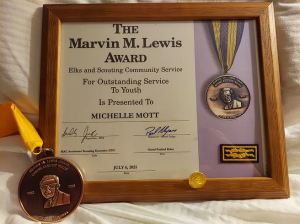Free Planet Fitness Summer Membership For Teens
Planet Fitness is helping parents to get their teens out of the house and stay active this summer by offering a one-of-a-kind benefit: a free membership for the entire summer. Perfect for our Scouts BSA and Venture crew members to stay physically strong all summer long!
The High School Summer Pass initiative offers a solution to teens’ struggles. Planet Fitness conducted a study that 93% of teens actually want to stay healthy, but only about 15% actually partake in 60-minutes of physical activity. Planet Fitness is determined to motivate teens and help them accomplish their fitness goals.
This offer is available at all Planet Fitness locations throughout the US and Canada. This is a part of the movement to improve teens’ mental and physical health. Originally, this program was called the “Teen Summer Challenge” which launched in 2019. They had almost a million teen signups who completed over 5 million workouts!
According to the Centers for Disease Control, fewer than 15% of teens were meeting the daily physical activity recommendation during the pandemic. Planet Fitness wants teens to feel safe and have a welcoming space when they arrive at any of their locations to get their sweat on in a healthy way.
All teens who sign up for the membership are automatically entered into a drawing for a scholarship, which will reward one student in each state with a $500 scholarship and one grand prize of $5,000 in scholarship money.
To enroll, students must be between the age of 14 and 19 years old. Teenagers under 18 years old must sign up with a parent or guardian either online or in-person at one of their clubs.
High school students can work out for free from May 16 to Aug. 13 at the nearest Planet Fitness location.
Teenagers looking to enroll in the program can register on the Planet Fitness website.
To uncover how high schoolers view health and fitness today, Planet Fitness commissioned a national study in partnership with Material to shed light on mental and physical health from both teens’ and parents’ perspectives. Although negatively impacted by the pandemic, teens are ready to make a commitment to getting healthy, both physically and mentally.
Key findings include:
- Physical Fitness for the Win. Despite three in five teens (60 percent) reporting their usual health and fitness routines were severely disrupted over the last two years, nearly all (89 percent) of their parents credit regular exercise and physical activity as helping their teens cope with the challenges of the pandemic. And nearly all (92 percent) teens agree that when they are regularly physically active, they feel much better mentally.
- Although many teens make exercise and fitness a priority in their life (65 percent), there are significant barriers to doing so. In fact, 78 percent of teens note that just having access to a place to work out and being able to do so with friends (72 percent) would benefit their health and fitness journeys.
- A majority of teens who exercise also agree that physical fitness makes them feel healthier (61 percent), stronger (57 percent) and happier (50 percent). It also provides the meaningful health benefits of more energy (69 percent), increased strength (64 percent) and stress relief (61 percent).
- And 84 percent of teens agree that there has never been a better time than now to focus on their health.
- Mental Health Takes Center Stage. Almost half (48 percent) of teens admit that they struggled with mental health for the first time during the pandemic. And more than half (51 percent) explain they currently struggle with anxiety.
- Parents are overwhelmingly concerned about how the past two years have impacted their teens’ mental health (71 percent), overall health (66 percent) and physical fitness (60 percent). And 71 percent are equally concerned for their high schooler’s academic progress and preparedness for college.
- That said, more than four in five teens report they are feeling hopeful about what’s to come in the future (85 percent) and that the pandemic showed them how strong they really are (82 percent).
- Let’s Get Talking. Parents have overwhelmingly spoken more regularly to their teens over the past two years about topics like self-esteem and confidence (92 percent), exercise and working out (88 percent) and mental health (82 percent). The majority of teens today also say they are now more open and communicative about their feelings (79 percent).
- Screen Time, More Time. A majority of parents (55 percent) also report the time their teens spends on social media has increased since the start of the pandemic. In fact, many parents feel their teens are spending more time being sedentary than active – 54 percent noted their teens text more today, 52 percent saw an uptick in playing video games and 50 percent of parents say their teen is spending more time watching TV.
- And more teens agree they spend too much time in front of screens than they did right before the pandemic (61 percent in 2022 versus 52 percent in 2020).
